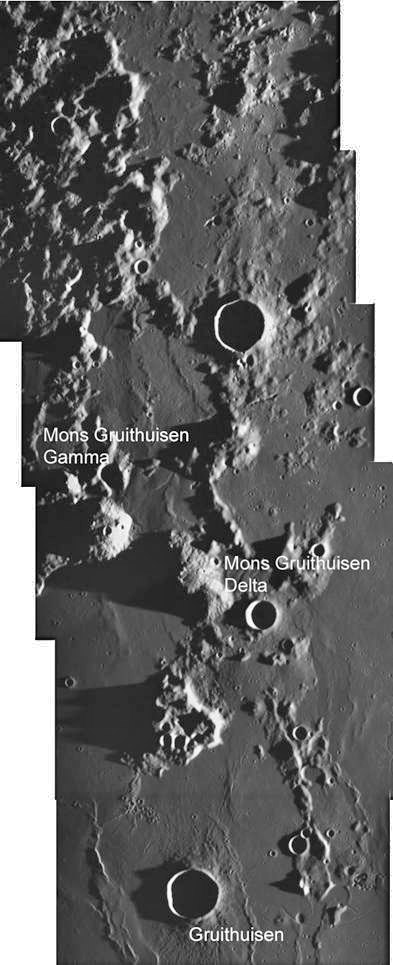
image by ESA/SPACE-X, Space Exploration Institute
Lunar Orbiter IV imaged the lunar surface with a fairly constant 20 degree ilumination angle, a compromise to show the maximum amount of surface with the lowest sun angle. This gorgeous SMART-1 image - not released on the ESA website but available on the site of the company that built the camera - illustrates the great value of lower sun images. Compared to Lunar Orbiter IV more mare ridges and other subtle details are visible (even though both are about 100 m resolution), and the lack of scan lines makes a much more natural look. The two Gruithuisen domes show more relief than on the Orbiter view and other volcanic flow features are visible, including what may be the smallest known dome on the Moon sandwiched between a hill and a craterpit north of the letter “s” in the “Mons Gruithuisen Delta” label. SMART-1 will teach us much about the Moon as its thousands of images are released.
Technical Details:
9 February 2006. Advanced Moon micro-Imager Experiment (AMIE) camera on SMART-1 spacecraft.
Related Links:
Yesterday's LPOD: A Rarely Seen Mess
Tomorrow's LPOD: An Experimental Online Map
COMMENTS?
Register, Log in, and join in the comments.



